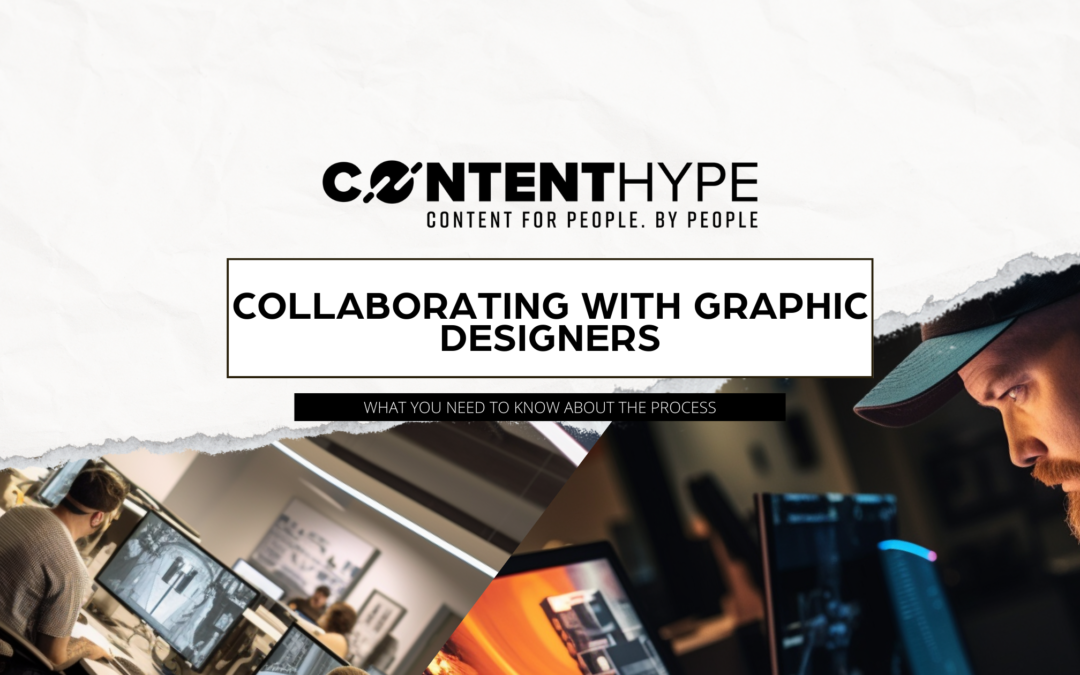Graphic design is really important nowadays because it helps companies create a unique style and communicate their message to people. It could be a cool logo, a great website layout, or an attractive ad that catches your eye. These designs are often the first thing that people see when they come across a business.
But creating them takes a lot of work and it’s important to make sure that each design represents the brand and connects with the audience.
For companies in Australia and around the world, working with graphic designers is a big part of their branding and marketing. But if you want to work well with a designer, it’s important to understand their process. That way, you can work together smoothly and create a strong relationship.
The Essence of the Graphic Design Process:
Designers have a structured approach to create visually appealing designs that effectively communicate the intended message to the target audience.
It’s important to consider the needs of the audience as different audiences require different information.
In Australia, designers draw from a rich tapestry of cultures and global design trends, creating unique designs. They use a systematic approach to ensure consistency, relevance, and impact.
For businesses collaborating with designers, understanding this process offers several benefits:
- Clear Expectations: Knowing the steps involved helps set clear expectations, ensuring both parties are on the same page throughout the project.
- Efficient Workflow: A well-defined process minimises revisions, streamlines communication, and ensures timely project completion.
- Quality Outcomes: A structured approach ensures that the final design is not just visually appealing but also aligns with the brand’s objectives and audience preferences.
In essence, the graphic design process is the backbone of any successful design project. It’s the roadmap that guides designers from the initial brief to the final masterpiece, ensuring each step is purposeful and aligned with the project’s goals.
Beginning with Clarity: The Creative Brief
Every successful design project starts with a clear and comprehensive creative brief. Think of it as the foundation that builds the entire design.
So, what should clients include in this brief to ensure clear communication with their designers?
- Project Overview: A concise description of the project, its objectives, and the desired outcomes.
- Target Audience: Details about the primary audience, their preferences, and any specific cultural or regional nuances to consider.
- Brand Guidelines: Existing rules for how to use colors, fonts, and other design elements in a brand.
- Content Marketing Plan: If possible, include your content marketing plan to ensure that your designer can understand how their designs will be implmented.
- Design Inspirations: Sharing examples of designs you admire can give designers a clearer picture of your preferences and expectations.
- Being clear about the budget and timeline helps designers plan and meet realistic expectations.
For designers, the creative brief acts as a guiding light. It provides them with the context they need to craft designs that not only look good but also achieve the desired objectives.
Clients benefit from investing time in creating a detailed brief for better collaboration with designers.

The Research Phase: Building a Foundation
Once the creative brief is in place, the next crucial step in the graphic design process is research.
This phase establishes the foundation for the entire project, guaranteeing that the designs are both visually pleasing and effective.
Designers must stay updated with trends, audience preferences, and cultural nuances for diverse markets.
Here’s what the research phase typically involves:
- Understanding the Brand: Before diving into design, it’s essential to have a deep understanding of the brand, its values, mission, and vision. This ensures that the designs align with the brand’s identity and convey the right message.
- Competitor Analysis: By analysing what competitors are doing, designers can identify gaps, opportunities, and areas where they can differentiate and make a mark.
- Trend Spotting: Design trends evolve rapidly. Staying updated with the latest design trends, especially those prevalent in the Australian market, ensures that the designs are contemporary and resonate with the audience.
- Audience Insights: Delving into the preferences, behaviours, and pain points of the target audience ensures that the designs effectively communicate and engage.
During the research phase, businesses can collaborate closely with designers to ensure not only visually stunning designs, but also strategically sound ones by providing insights, feedback, and relevant data.
In essence, research is the bedrock upon which impactful designs are built. It ensures that every design decision is informed, purposeful, and aligned with the project’s objectives.
Ideation and Brainstorming: Crafting the Vision
With a solid foundation laid through research, the next step in the graphic design process is ideation and brainstorming. This phase is where creativity truly comes to life, as designers begin to conceptualise and visualise the project’s direction.
In the vibrant Australian design scene, brainstorming sessions often draw inspiration from a myriad of sources, from local art and culture to global design trends. Here’s what this phase typically entails:
- Brainstorming Sessions: These collaborative sessions involve bouncing ideas off each other, sketching initial concepts, and discussing potential design directions. It’s a free-flowing process where creativity is encouraged, and no idea is off the table.
- Mood Boards and Conceptualisation: Designers often create mood boards to visualise the design’s look and feel. These boards can include colour palettes, typography choices, imagery, and other design elements that capture the project’s essence.
- Initial Design Mock-ups: Based on the brainstorming outcomes, designers create initial mock-ups or wireframes. These preliminary designs give a glimpse of the final product and serve as a starting point for further refinement.
For clients, this phase offers an exciting peek into the creative minds of designers. It’s also an opportunity to provide initial feedback, ensuring that the designs align with their vision and expectations.
Iterative Reviews: The 10/50/99 Rule
One of the key aspects of the graphic design process, especially in professional settings, is the iterative review process. This ensures that the designs evolve in the right direction, aligning with the client’s vision and the project’s objectives. The 10/50/99 rule is a popular approach adopted by many designers, including those in Australia, to streamline feedback and ensure efficient progress.
Here’s a breakdown of the 10/50/99 rule:
- 10% Review: At this stage, the basic structure and concept of the design are presented. It’s a rough sketch or a wireframe, giving a glimpse of the design’s direction. Feedback at this stage is broad, focusing on the overall concept and direction.
- 50% Review: By this point, the design has taken shape with more details added. Elements like typography, colour schemes, and imagery are more refined. Feedback here is more specific, focusing on design elements and their placement.
- 99% Review: This is the final review before the design is finalised. Almost complete, the design at this stage only needs minor tweaks and adjustments. Feedback is very specific, targeting minute details to ensure perfection.
Of course, if budget is a constraint, some designers may offer a package that includes less reviews. In that example you might get a 50% review and a 99% review.
It’s important to understand before you work with a graphic designer that reviews and revisions are not unlimited.
For clients, understanding this rule is crucial. It ensures that they provide timely and relevant feedback at each stage, ensuring the design evolves as per their vision. Moreover, it streamlines the review process, reducing back-and-forth and ensuring a smoother workflow.
Final Presentation and Implementation:
Reaching the final stages of the graphic design process is always a moment of anticipation and excitement. After rounds of brainstorming, ideation, and iterative reviews, the design is now ready to be unveiled and implemented.
Here’s what this phase typically involves:
- Design Presentation: The designer presents the final design to the client, showcasing the culmination of all the hard work, creativity, and collaboration. This presentation often includes a detailed explanation of design choices, how they align with the brand’s objectives, and how they cater to the target audience.
- Client Feedback and Approval: Even at this stage, client feedback is crucial. Minor tweaks and adjustments can be made to ensure the design is perfect. Once the client is satisfied, the design is approved for implementation.
- Implementation: With approval in hand, the design is now ready to be rolled out. Whether it’s a logo, a website layout, a marketing collateral, or any other design project, this is when the design goes live, reaching its intended audience.
Navigating the Graphic Design Process with Confidence
The graphic design process, while intricate, is a journey of creativity, collaboration, and clarity. From the initial brief to the final implementation, each step is crucial in ensuring that the design not only looks good but also serves its purpose effectively. For businesses, understanding this process is the key to a successful collaboration with designers, ensuring that the final design aligns with their vision and resonates with their audience.
In the diverse and dynamic Australian market, where design preferences can vary widely, this understanding becomes even more crucial. It ensures that designs are not only visually appealing but also culturally relevant and resonant.
For those looking to embark on a design project, whether in Australia or globally, the key is to trust the process, collaborate closely with designers, and provide clear and timely feedback. And for businesses seeking expert guidance in navigating the design journey, Content Hype is here to help. With our deep understanding of the design process and the Australian market, we ensure that your designs not only stand out but also make a lasting impact.
Reach out to Content Hype for all your graphic design and content strategy needs. Let’s create designs that tell your story, the way it deserves to be told.


Recent Comments